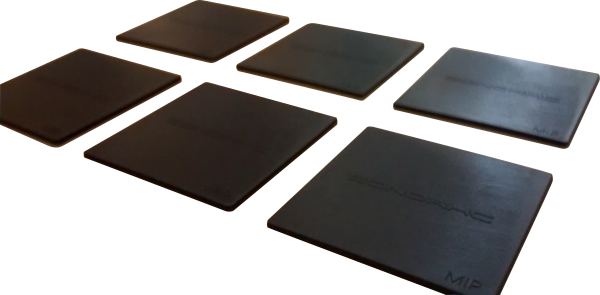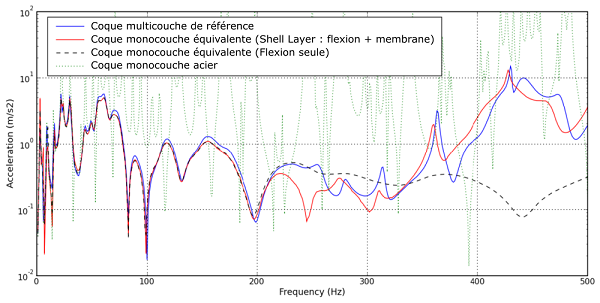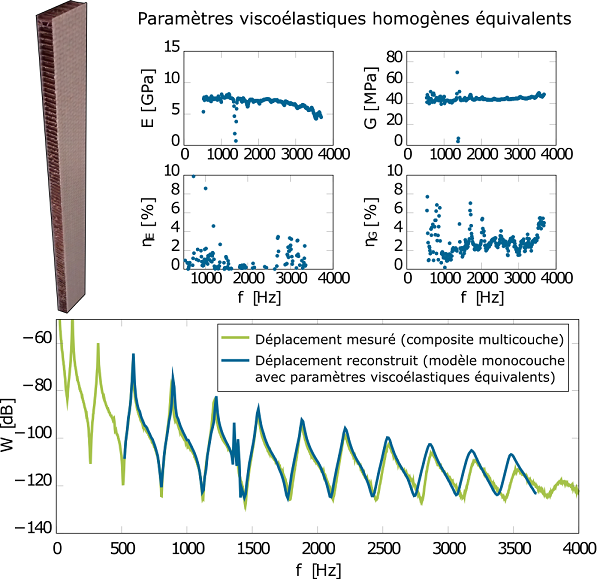Amortization of structures
Structures excited by mechanical sources emit noise. To reduce this nuisance, a possible way is to dissipate the vibratory energy by increasing the damping of the structure.

Viscoelastic properties of materials
The lightening of the structures leads to the more and more common use of composite materials, made of different layers of materials, of which the most common form is the damping sandwich. The representation of such structures in 3D finite elements makes modeling more difficult, but also increases the time required for computation. In cooperation with INSA Lyon, SONORHC has developed the Shell Layer software to access equivalent material characteristics that can be integrated into standard 2D computation codes, thus considerably reducing computation times.

A similar experimental approach is also available, using directly the displacement field of the real structure and based on the inverse RIFF method. (see box on the right)
Analysis of structures by RIFF Technique
Initiated in the 1990's by Charles Pézerat and Jean-Louis Guyader , the RIFF Technique (Inverse Filtered Resolution) is an experimental technique for the analysis of vibrating structures from a measurement of the displacement field. This local approach (independent of the boundary conditions) has undergone numerous developments allowing to localize and quantify vibratory sources, to characterize the viscoelastic parameters of materials, to identify the acoustic part of a turbulent parietal pressure field, to locate defects, etc.

